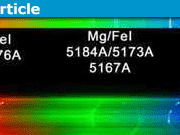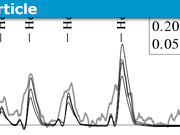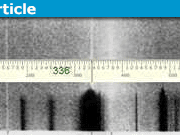Intro to the Ionization Energy of Atomic Hydrogen
Table of Contents
Introduction
In previous articles relating to various transition energies in Hydrogen, Helium and Deuterium we have employed the following formula for electron energy given a particular primary quantum number n:
$$ E_{n}=\mu c^2\sqrt{1-\frac{Z^2\alpha^2}{n^2}} $$
where ## \alpha ## is the fine structure constant and ## \mu ## the reduced electron mass for a single electron bound to whichever nucleus. Z=1 for Hydrogen and Deuterium, Z=2 for Helium. Reduced mass is calculated from electron mass and nuclear mass as follows: $$\mu = \frac{m_e\times m_{n}}{m_e+m_{n}} $$.
Calculation of Ionization Energy: Atomic Hydrogen
Perhaps one of the simplest applications of this formula is the determination of the ionization energy of atomic hydrogen – ie the energy required to move the single Hydrogen electron from its ground state to the point where in essence it becomes a ‘free electron’. At this point, primary quantum number n=∞ and electron energy is given by the straightforward formula:
$$ E_{∞}=\mu c^2 $$
Hence the transition energy from the ground state to the above is simply:
$$E_i=E_∞ – E_1=\mu c^2-\mu c^2 \sqrt{1-\alpha^2}=\mu c^2(1-\sqrt{1-\alpha^2}) $$
Carrying out the above calculation on Wolfram Alpha we obtain a first approximation for this value in electron volts or equivalent SI units. This result needs to be corrected or perhaps ‘fine tuned’ by subtracting the most accurate available value of “Ground State Lamb shift”: an energy ‘offset’ described in our previous “Insights” article: The Deuterium Lyman Alpha line. The value for this offset (8172.874(60) MHz) is given in the abstract for the following paper:
Precision-Measurement of the 1S Ground-State Lamb Shift in Atomic Hydrogen and Deuterium.
Correcting for Ground State Lamb Shift
We convert the offset value from MHz to electron volts and then subtract from our original calculation above obtaining the following result:
13.5984345 eV .
Wolfram Alpha calculation details can be viewed here.
The calculated value is in very close concordance with the corresponding value given on the NIST spectral database (just enter “H I” on the entry form).
13.59843449 eV.
Conclusion
As in all previous articles employing the simplified Dirac Energy Equation, we obtain a precision result agreeing with the NIST value to as many significant figures as Wolfram Alpha is prepared to calculate!
References
| [1] | A. Kramida, Yu. Ralchenko, J. Reader, and and NIST ASD Team. NIST Atomic Spectra Database (ver. 5.7.1), [Online]. Available: https://physics.nist.gov/asd [2019, December 6]. National Institute of Standards and Technology, Gaithersburg, MD., 2019. |
| [2] | M. Weitz, A. Huber, F. Schmidtkaler, D. Leibfried, W. Vassen, C. Zimmermann, K. Pachucki, T.W. Hansch, L. Julien, and F. Biraben. Precision-measurement of the 1s ground-state lamb shift in atomic-hydrogen and deuterium by frequency comparison. Physical Review A, 52(4):2664-2681, 1995. DOI ]
|
- BSc (Elec Eng) University of Cape Town, HDE University of South Africa
- Maths and Science Tutor, Florida Park, Johannesburg
- Research areas (personal interest): Hydrogen / Hydrogen-like spectra. Historical Maths.
- Wikipdedia contributions: Ptolemy’s Theorem, Diophantus II.VIII, Continuous Repayment Mortgage








Re "more digits": I'm not sure if this option is available when you are using scientific constants as in this calculation. WA seems to put some kind of limit on the number of significant figures it will display.
Unless you click on "more digits".
The WolframAlpha image has a low resolution in the article and you could have added a link to WA with the calculation filled in.